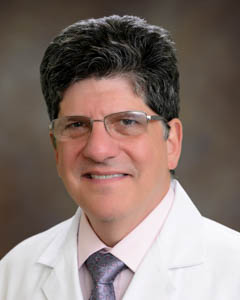What is trigeminal neuralgia? How is it treated?
Trigeminal neuralgia has been called one of the most painful conditions ever to afflict humankind. It is caused by pressure — often by an inflamed major artery in the head — on the trigeminal nerve, which includes three nerves branching off the main nerve to carry signals from the face and scalp to the brain. An attack on the trigeminal nerve can be triggered by something as mild as a gust of wind, a high-pitched sound or brushing your teeth.
The excruciating pain often is described as a stabbing electrical shock; other victims report sensations of burning, pressing, crushing, or shooting pain that becomes quite intense. Attacks can last a few seconds, several minutes, or even hours. Some patients report remissions lasting months, or even a few years, before the affliction returns. At the other end of the spectrum, victims can have a hundred or more episodes in a single day. Sadly, the misery brought about by such chronic and relentless suffering has led some to refer to trigeminal neuralgia as the “suicide disease.”
How common is trigeminal neuralgia?
Trigeminal neuralgia affects as many as 16,000 people in the United States, though that number could be higher, as the disease is often misdiagnosed, sometimes being mistaken for TMJ, short for temporomandibular joint disorder, or a dental problem.Trigeminal neuralgia also affects women more often than men, and it is more likely to occur in people who are over age 50, though it occasional affects children as young as three.
What are the treatment options for trigeminal neuralgia?
An anticonvulsant medication called “carbamazepine” is considered the preferred first line of treatment, according to a pharmacotherapy report on the disease. Low doses of some antidepressants have also been used, though experts think that only helps the mental depression that often accompanies trigeminal neuralgia, rather than the problem itself. Another medication often used is opioid painkillers, such as morphine or oxycodone.Surgery is usually tried only after treatment with medication has failed or run its’ course
According to Dr. William Friedman, chairman of the Department of Neurosurgery both at Orlando Health and the University of Florida College of Medicine, there are several surgical options for those with trigeminal neuralgia, though two of these surgical procedures are not as effective as the latest procedure, called “microvascular decompression.”One is an outpatient procedure called “radio-frequency lesion,” in which a needle is inserted into the trigeminal nerve to burn it and stop the pain. A con to this method is that a feeling of facial numbness can persist for some time afterward. The other surgical option involves what is called “radiosurgery,” which bombards the nerve with radiation. However, this is the least effective of the three surgical options.
The preferred treatment option: microvascular decompression
The most effective surgery option is microvascular decompression, according to Dr. Friedman, who is one of the nation’s leading practitioners of this procedure, and now offers this procedure at Orlando Health. During the procedure, the trigeminal nerve is accessed through the skull behind the ear. A sponge-like or cottony material is placed between the offending artery after it is isolated and the nerve to cushion the nerve.There is an 80 percent success rate accompanying this surgical option nationwide. Dr. Friedman performs about 100 microvascular decompressions a year “with excellent results,” and another 100 radio-frequency lesion procedures, involving the needle that burns the nerve.
Dr. Friedman has produced an informative video, in which he and patients describe the condition, outline the treatment options that are available and discusses the pros and cons to each of these options.
“Almost all microvascular decompression patients get immediate relief of pain after surgery. Over a 10-year period, 25 percent will experience a recurrence and will need additional treatment with the radio-frequency lesion procedure, or radio surgery,” Dr. Friedman said.
For patients whom drug treatment is no longer effective, Dr. Friedman has great confidence in the effectiveness of microvascular decompression, which he is now ready to bring from Gainesville to Orlando.
“We’re ready to go,” he said. “We just need to get the word out to patients.”







